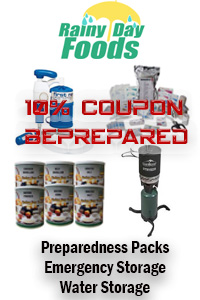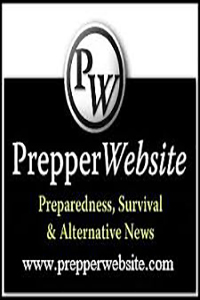By The Maj
When I started prepping, I went at it like I do most things in life, which is WIDE OPEN. During that first year, I amassed quite a stockpile of supplies and equipment with little regard to prioritization of true need. Now, do not get me wrong, I focused on need but the problem was, I felt as though I needed it all. Like most new preppers, I had the nagging suspicion that I was WAY behind and TEOTWAWKI was right around the corner.
My wife had bought into the whole prepping concept but she finally put her foot down and demanded that we stop and take a critical look at where we were (this was after I had moved her pictures from under the bed to a storage shed to make room for more “things”). Reluctantly, I agreed to stop all purchases until we could update our inventory list and properly evaluate it for true need. Updating the inventory list was simple enough and it took a good weekend to make certain that nothing was missed, but how in the world were we going to determine “true need”? We went back and forth and forth and back and back and forth again on what “true need” actually is.
Take a minute and think about it. What exactly is “true need”? Now, “need” is easy enough to define and in this case a need is something that allows me to survive or on a basic level to continue life. A “need” is often confused with a “want” but a “want” is not necessary for the very basics of survival. Sure a “want” may make survival easier but in the basic sense of survival the absence of the “want” does not mean the difference between life and death. Confused yet? Think of it like this, I “need” shelter (protection from the elements) but I “want” a hardened cabin in the redoubt. That example is a little extreme and some would argue they “need” a cabin in the redoubt, but as long as the basics of shelter are met the “need” is satisfied.
So, we could easily define and agree upon what a “need” was but we were still having trouble when we added “true” in front of it. We decided to break things down (very similar to PJ’s Prepper Pyramid) and assign a grading scale to each category. The categories included: Food & Water (1), Shelter & Fire (2), Personal Protection & Physical Security (3), First-Aid & Hygiene (4), and Barter Items & Currency (5). Naturally, from our perspective, the lower the assigned number, the more critical the “need” was deemed to be. Using this break down and grading scale, we reorganized the inventory list to match each category as identified above. Standing there, looking at each category on its separate sheet of butcher paper, with all the items in our inventory listed, I realized that my wife was right to some extent and that I had lost control of our preparations to some degree.
I had a lot of supplies and equipment but I had also missed some things in my haste to prepare for some unknown event on the horizon that was going to change life as we know it. I became frustrated and stewed over where I was and how I had gotten there over the course of the next week. I kept coming back to “true need”. What is it? How can I determine it? After studying the issue and researching as much as possible, I finally decided to attempt to break things down even more. The problem was huge, almost overwhelming.
Taking the basics, I broke them down into time periods for survival of basic events. I ended up deciding on six time periods post SHTF event to include: 72 hours, 1 week, 1 month, 3 months, 6 months, and 1 year. In my line of thinking and as a fact, if I did not survive the first 72 hours, there was no need to be concerned with preparations past that point. Would it really matter if I had six months worth of food and water on hand but did not have adequate shelter past one month? Would Barter Items have any value in a 72 hour event? Did I need heirloom seed as a long term food supply when I only had one week’s worth of Personal Hygiene supplies? As I sat there, I began to get a better understanding of “true need” and developed a simple tool to help guide me on my purchases:

If I had taken the time to make this chart and planned my preparations from the beginning, I would have focused on acquiring and stockpiling food & water for a 72 hour event first, then while I was working on stockpiling 1 week’s worth of food and water, I would have simultaneously been working on ensuring that I had adequate shelter and fire making capabilities for 72 hours and so on. I would have used each column as a gate that I had to meet before I moved onto the next gate. Instead, I had gone a year stockpiling supplies and at the time that I drew out the chart above my stockpile looked like this:

Needless to say, I was startled by what I came up with. Here I sat, like many “newbie” preppers, working on having enough ammunition to outfit a small army and only having enough food and water stockpiled to last me one month. Sure, the argument could be made that I could use ammunition to hunt but the question remained was there a “true need” for that amount of ammunition at that point in my preparations? The answer is “NO”. If Food & Water is my most important need, then stockpiles and preparations for other areas should not surpass it. With limited resources, including money and storage space, my focus should have been scaled and organized according to “true need”. I realized that “true need” was having the right amount of supplies at the right time post event.
As you travel through this prepping world, you will be faced with numerous decision points, “weekly deals” on supplies and equipment, and “expert opinion” on what and how much you need to have on hand. You will also be limited on where you are in life, how much money you have available for prepping, and the space available to store your supplies. Take the time to make certain that you are addressing your “true needs” as you progress in your preparations. Who knows, maybe it will save you some unnecessary heart ache in the process OR more importantly ensure you have the right mix of supplies and equipment to survive what is thrown your way.









8 comments
Skip to comment form
Interesting, but confusing. Are you saying we should have a month’s worth of food, a tent, some firewood and some 72hr protection (say, pepper spray) before buying a single Band-Aid? And a year’s supply of food before laying up $500 for the bug-out bag?
Not at all and good catch. My focus for this article was more focused on bug-in, instead of bugout even though both tend to overlap in planning and preparations. I should have been more clear on that aspect. I also should have clearly defined “barter / currency” and for the purposes of my chart above that included items stockpiled for trade and precious metals (gold/silver).
Bugout planning would change the chart dynamically and the overall timeline would shrink in my personal situation. However, since the space limitations for Bugout are smaller than bug in it did not seem overwhelming at the time and most of my mistakes were made in the long term side of things.
Also, the chart above is only an example that worked for me and I did not intend to present it as a hard rule of thumb but only a guide that someone could tailor to their own personal situation.
Sorry was thinking bug-out because of the 72 hour barter / currency, and the only possible 3-day need for currency would be some cash in the BoB. But I’m still confused; Zero first aid until one month’s worth of food is purchased?
*only currency need would be a 3-day-long crisis where you need some cash in the BoB to get you home. (Miss-stated that.)
For my purposes, yes on the First-Aid. However, I would caveat that with it would not necessarily be “zero” but it would definitely not be my focus (primary purchases) until I had one month of food and water stockpiled or the ability to acquire one month’s worth of food and water or a combination of both to get me to that “one month” goal.
I stress again, this chart is an example of what I consider to be the best way for me to break things down in stockpiling in order to keep myself focused and headed down the right track. You would need to break things down how they work best in your own personal situation.
Two reasons that I would want to have one month’s worth of food before focusing on FA and Personal Hygiene:
1. I do not count daily use items in my inventory because you have to draw a line on your inventory and if you are using something on a daily basis (even weekly in some cases), my inventory would be constantly going up and down depending on when the next trip to the grocery store happens to be. Naturally, post SHTF this daily use stuff would be rolled into the stockpile and in my case I probably have enough daily use items for FA and Personal Hygiene to last me well over a week post SHTF. I just do not count them as part of my stockpile.
2. Getting to one month’s worth of food and water was not a big issue for me. I hobby farm, own livestock, several fish ponds, and my wife garden’s. We did this before we ever even started prepping so getting to a month’s worth of food + on hand was easier for me than it will be for most other preppers.
Oh yes definitely I understand this is a personal chart, I was just trying to get inside your head to see if your logic needs to apply to mine. It makes sense now, and will be a useful too for me. Thanks!
great article…I have focused on ‘bugging in’ and have a decent food supply, a great medical bag because I am an ER nurse, but def lack in currency and defense…gives good perspective in prioritizing….give thought to allowing sharing of posts to social media sites…as a ‘newbie’ prepper, I am trying to share wisdom when I find it!
I would like to say very thought out article. 31 year of military service has given me alot of insight as to what and how to prep. Civilian prepping can be overwhelming from both the financial as well as the logistics standpoint. Having been in service for so long I have made it a point to see what works in the field then procure that article or one similar for prepping. I see many people getting carried away with one or two aspects to prepping but SHTF scenarios are so vast that I believe that just focusing on those types of events should be motivation for starting. The sheeple will always be there and as resources dwindle they will be forced into their categories of survival. I have always taken an approach using both bug in and bug out scenarios. The lists you built make good sense. In a bug in scenario the focus is on the fortification of home and hearth. The bug out is the scenario least favored due to elements, logistical concerns, transport etc. Thinking of both can give you a good mix of resource listings. Folks on shoestring budgets need to look at what they have for assets and list them first. This will tend to cut down on the iron mountain of supplies they need. Critical thinking is ingrained for me but folks out there need to get books or blogs on the mental prep. That is the key. As Murphy says, no plan survives it’s first execution the way you want it. Outcomes to natural disasters globally give folks scenarios for what to plan for. Good luck with your endeavours.